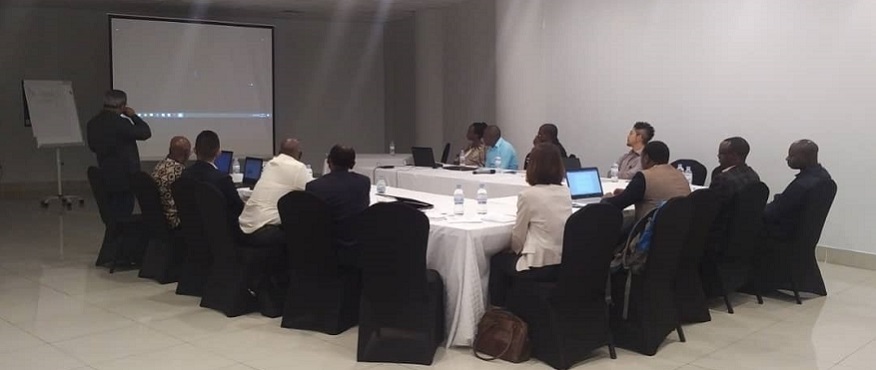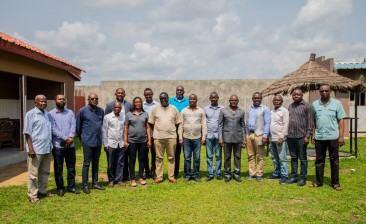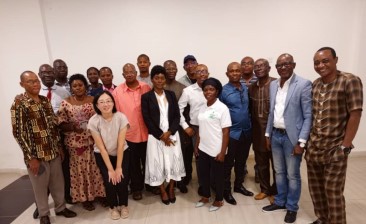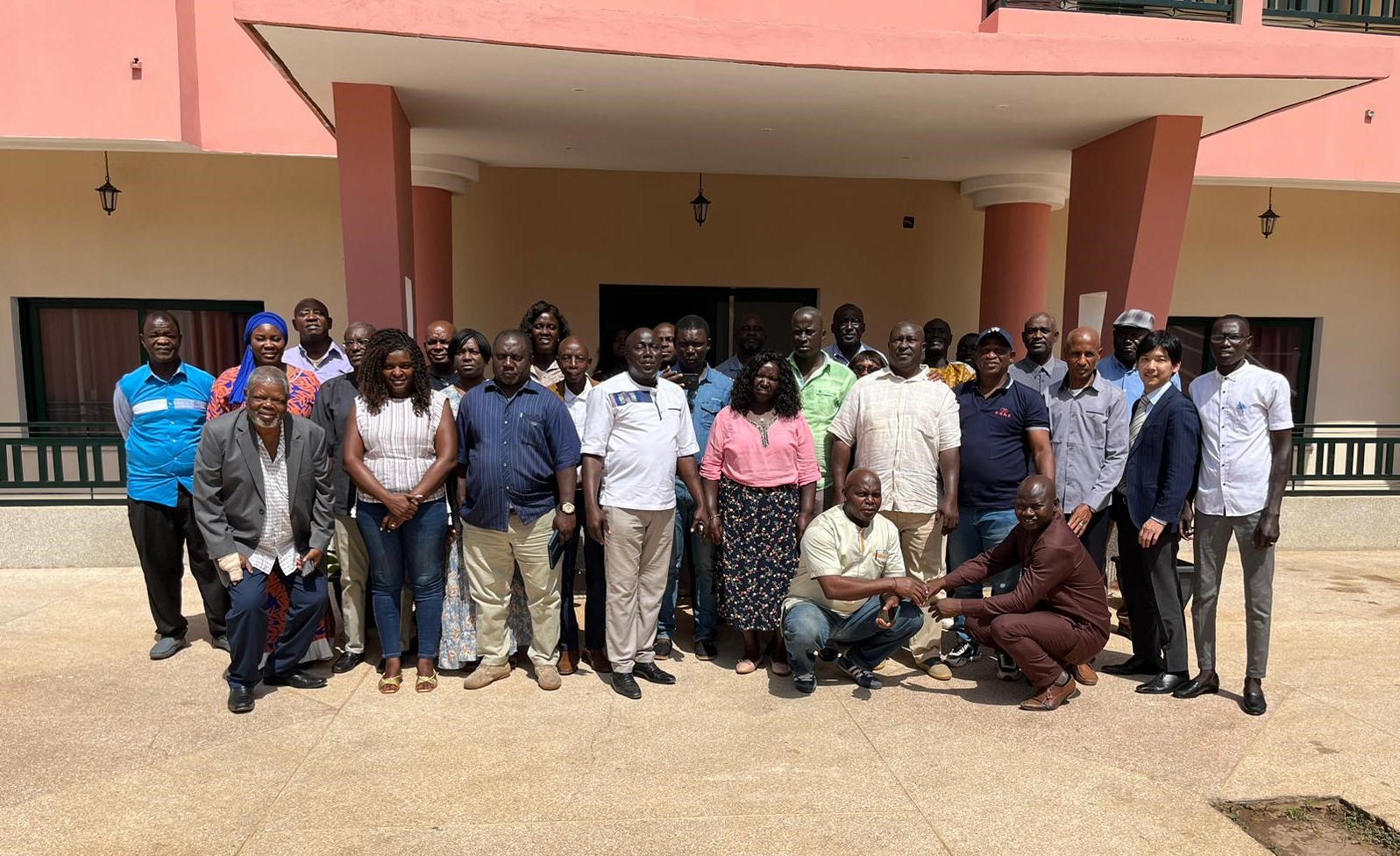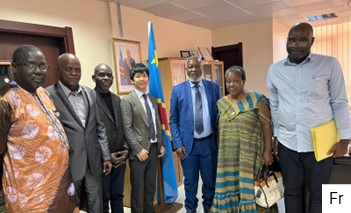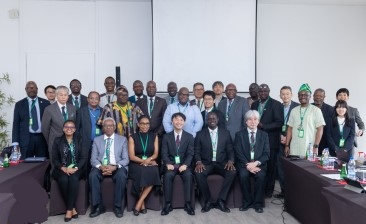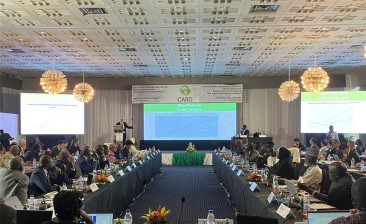Rwanda, November 2019
CARD Working Week for developing NRDS-2 in Rwanda
Rice was introduced in Rwanda in the late 1960s by Korean and Chinese missions. It was quickly recognized by the farmers as the only food crop that could be grown in Rwanda’s marshlands, especially during the rainy season. With the liberalisation of trade in the late 90s, the demand for rice consumption has started gaining traction; spurring intensive competition with traditional food crops such as maize, potato and cassava. Acknowledging the growing relevance of rice in food security, the Government of Rwanda has put in enormous resources in developing marshlands and distributing land to farmers for rice cultivation. Rice production has since become a major strategic avenue for poverty alleviation, economic growth and development and food security in Rwanda.
Rwanda joined the CARD initiative in 2009 and developed its first National Rice Development Strategy (NRDS-1; 2010-2018). Against an increment of 76% in consumption, domestic rice production increased by 63% during this phase. The gap is presently filled through the importation of rice grains from Asia. Such importation has not only put pressure on domestic farm gate prices of paddy but also on the quality of the locally produced rice. Though the marshland areas under rice cultivation more than doubled under the NRDS-1, the momentum of marshland reclamation and rehabilitation has substantially slowed down in recent years. To address the constraints in the rice sector, the government has formed a new task force and requested the CARD to assist in renewing the NRDS. The CARD Secretariat dispatched a consultant to provide technical assistance to the task force in revising the NRDS through a working week between the 19th and 22nd of November 2019.
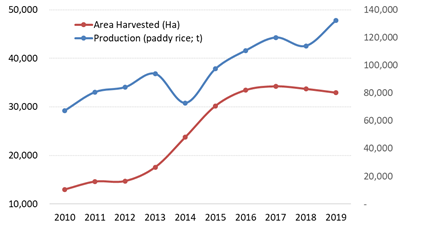
CARD activity and the results
The purpose of the working week is to appraise the current trends in rice sector development and establish a new NRDS framework (NRDS-2) for the period 2020-2030. The task force members organized the working week at Ubumwe Grande Hotel in Kigali. Representatives from the Ministry of Agriculture and Animal Resources (MINAGRI), Rwanda Agriculture Board (RAB), Marshland development project, Rwanda Standards Board, Rwanda Revenue Authority, Farmers’ Cooperatives, Rice Millers Association, JICA and Food and Agriculture Organization (FAO) participated during the week.
Following a briefing on the expected outputs of the working week, the CARD consultant shared Rwanda’s rice production and consumption data parameters from the National Institute of Statistics of Rwanda (NISR), FAO and the United States Department of Agriculture (USDA). The participants reconciled that the data on area, production and yield from NISR and FAO; and data on consumption from USDA have better accuracy. The data confirmed that although the area under rice production increased until 2015, it has stagnated since 2016. The participants speculated that the slow-down in marshland expansion could be due to the managerial and financial difficulties of water user associations in undertaking the repair and maintenance of the irrigation infrastructures in marshlands, especially during periods of flash floods.
Analyses of data revealed that rice consumption in Rwanda has been increasing at a rate of 0.497 Kg/year between 2012 and 2019. Despite the recent increments in domestic rice production, the country has managed an average rice self-sufficiency ratio of 45.0% (±1.6%) during this period. Recent CARD-AGRA market studies in Rwanda revealed that amongst the three market segments viz., (i) short-grain, (ii) aromatic medium/long grain and (iii) non-aromatic medium/long grain; importation of rice is more pronounced under the non-aromatic medium/long grain segment.
Based on the projected population growth; the task force estimated the consumption demand. It was figured that the country would require a 3.3-fold increase in paddy production to attain self-sufficiency. However, since the overarching 4th phase of a strategic plan for agriculture transformation (PSTA-4) stipulates 60,000 Ha as the area under rice cultivation for 2030, the task force figured that on-farm productivity needs to be increased by 2.05-fold to become self-sufficient.
The task force members acknowledged that rising the national average of on-farm productivity from the current level of 3.51 t/Ha to 7.2 t/Ha would be less realistic, and hence set a productivity target of 6.5 t/Ha under the NRDS-2. This target would allow Rwanda to achieve a self-sufficiency rate of 90%. It was agreed that while the NRDS-2 shall focus on increasing the production of the competitive market segments (short grain and aromatic long-grain) and passively admit 10% of importation under the non-aromatic segment.
In accordance with such a contour of targets, the task force members then established a strategic framework for the development of the rice value chain under the NRDS-2. The four objectives of the NRDS-2 included (i) Enhancement of rice production and productivity through research and extension, (ii) Increasing total factor productivity and resilience of rice farms to climate change, (iii) Facilitation of sustainable and market-driven production systems, and (iv) Improvement of policy and institutional environment for increasing the private sector investments. These strategic objectives are in alignment with that of the PSTA-4, thus justifying investments in the rice sector by development partners and other stakeholders within the implementation framework of the PSTA-4.
The task force members further elaborated major interventions, expected outcomes and mid-term (2024) and long-term (2030) indicators for tracking the progress under two of the four strategic objectives. Due to time limitations, the task force has agreed to continue the elaboration of the interventions and indicators for the remaining two objectives through another working week.
Way forward
Going forward, the task force has agreed to continue the discussions on further elaboration of the strategic framework and the value chain segments. The task force members have decided to request the Ministry of Agriculture and Animal Resources, JICA and CARD for recruiting a national consultant for drafting the NRDS-2. The draft will be presented to the Agriculture Sector Working Group (ASWG); and upon ASWG’s approval, the draft will be shared with the stakeholders in the country. The task force has decided to press the process of validating the NRDS-2 and seek the official approval of the NRDS-2 before the start of the next fiscal year (July-2020).
